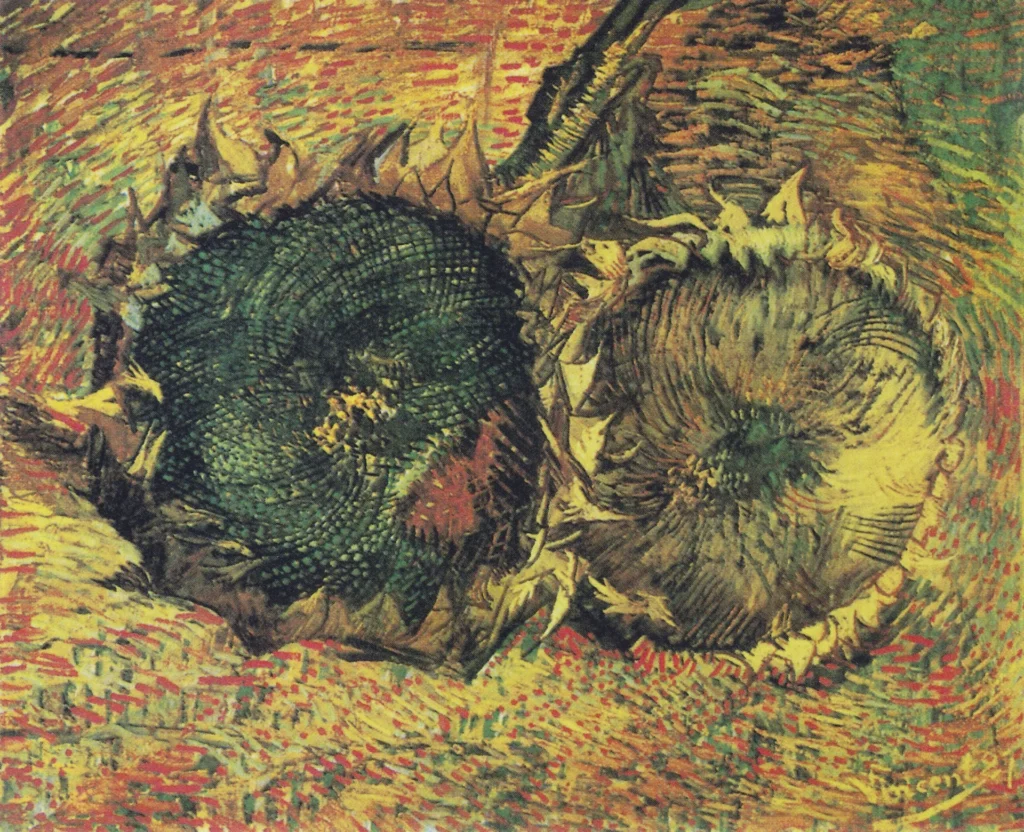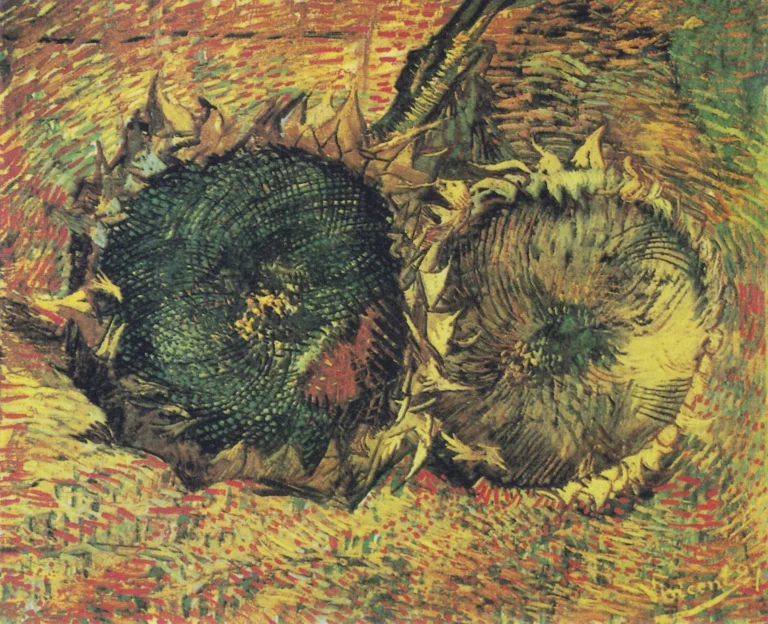Two Cut Sunflowers (1887)
Two Cut Sunflowers is a stunning still-life painting by Vincent van Gogh, created in 1887 during his transformative period in Paris. This artwork features two cut sunflowers placed elegantly in a vase, showcasing Van Gogh's signature bold colors and dynamic brushwork. Part of his famed sunflower series, this piece marks a pivotal moment in his exploration of color and composition, encapsulating the emotional depth and vibrancy that defines his artistry.
Year 1887
About the Artwork
The creation of Two Cut Sunflowers occurred during a critical phase in Van Gogh's life, as he transitioned from the darker palettes of his earlier works to a more vivid expression of color and light. This painting predates his more famous sunflower series from 1888, marking an early exploration of sunflowers that would later become synonymous with his style. Van Gogh's fascination with sunflowers symbolized happiness and warmth, reflecting his emotional state during a time of both struggle and creativity. The floral subject matter allowed him to practice and develop his distinct brush techniques and bold color choices. Today, Two Cut Sunflowers not only captures the beauty of the natural world but also stands as a crucial part of Van Gogh's artistic legacy.
Did You Know
Liked what you see? Add it to your collection.
Enjoyed reading? Share it.
... continued
Creation and Period
The painting was made during Van Gogh's time in Paris, a period marked by his experimentation with color and technique. It is part of his sunflower series, which he began in August 1888, although Two Cut Sunflowers itself was painted a year earlier in 1887.
Composition
The painting features two sunflowers that have been cut and placed in a vase. The composition is simple yet vibrant, showcasing Van Gogh's use of bold colors and thick brushstrokes, characteristic of his post-Impressionist style.
Reproductions
The original painting is highly regarded, and as a result, numerous reproductions are available. These reproductions are often hand-painted in oil on canvas to closely mimic the original work. They can be found through various art reproduction websites, such as Van Gogh Studio, Top of Art, and Reproduction Gallery, which offer museum-quality replicas with free global shipping.










